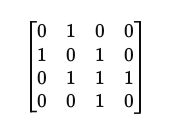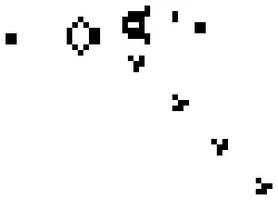Reductive physicalism undermines itself and cannot explain how interaction happens at all. Let’s start with a syllogism:
- All interaction is relational.
- All relations are non-physical.
- Therefore, all interaction is non-physical.
This is a valid argument; the conclusion necessarily follows from the premises. But are the premises true?
(1) should be uncontroversial. “Interaction” is inherently relational—an interaction is the state of A affecting the state of B.
Therefore, (2) is where the argument lies. I’m going to make the case that relations are, by definition, non-physical.
Atoms “Bumping Into Each Other”
Let’s take a simple example. Two hydrogen atoms colliding with each other.
No matter how you conceive of the atoms—as probability clouds, states of space, fields—the question arises: why don’t the atoms simply “pass through” each other? Why do they interact at all? Why do the states of one field/cloud/structure affect the states of another?
There are different ways to answer, but the answers look similar in the abstract. There are some physical objects and physical processes that give rise to other physical objects and processes, generating a regress of physical explanation. So at some point, physical interaction always ends up appealing to laws, rules, or principles—inherently abstract things that specify what happens when A relates to B in a particular way. It’s a variation of, “Specific structures behave in specific ways because of the laws of physics.” Those laws are sometimes captured with mathematical expressions.
Even describing the elementary “behavior” of physical objects requires abstractions—the concept of “behavior” itself is relational and non-physical, as “behavior” is about how patterns are related across time.
So “atoms bumping into each other” turns out to be a mixture of physical and abstract. Atoms are physical (let’s say), and bumping into each other is a highly complex, abstract, relational thing.
(Note: if you are tempted to say, “The relation is itself physical; it’s like a string attached to the two atoms”, that does not work, because we’d require an explanation for how the string affects the atoms—the string would be, in effect, another atom, and therefore we’d be left asking, “By what mechanism does the string interact with the atoms connected to it?”)
“It’s Just a Description!”
One attempt to avoid this conclusion is to say, “No no, physical laws don’t have any causal power. They are merely descriptions of observed patterns!”
But this only creates a bigger problem. The descriptionists are in principle rejecting explanations altogether, which is not far from a rejection of rationality. If rationality is about finding explanations for things, the descriptionist insists one should be content with no explanation for causal interaction at all.
Ironically, this position does give credence to the syllogism at the beginning of this article. If interaction is relational, and relations are non-physical, they conclude interaction must not be happening at all, and we’re left with the inexplicable appearance of interaction.
This leaves us at a fork in the road. When you look deeply enough at the world, it starts to look back, and the temptation is to close your eyes.


